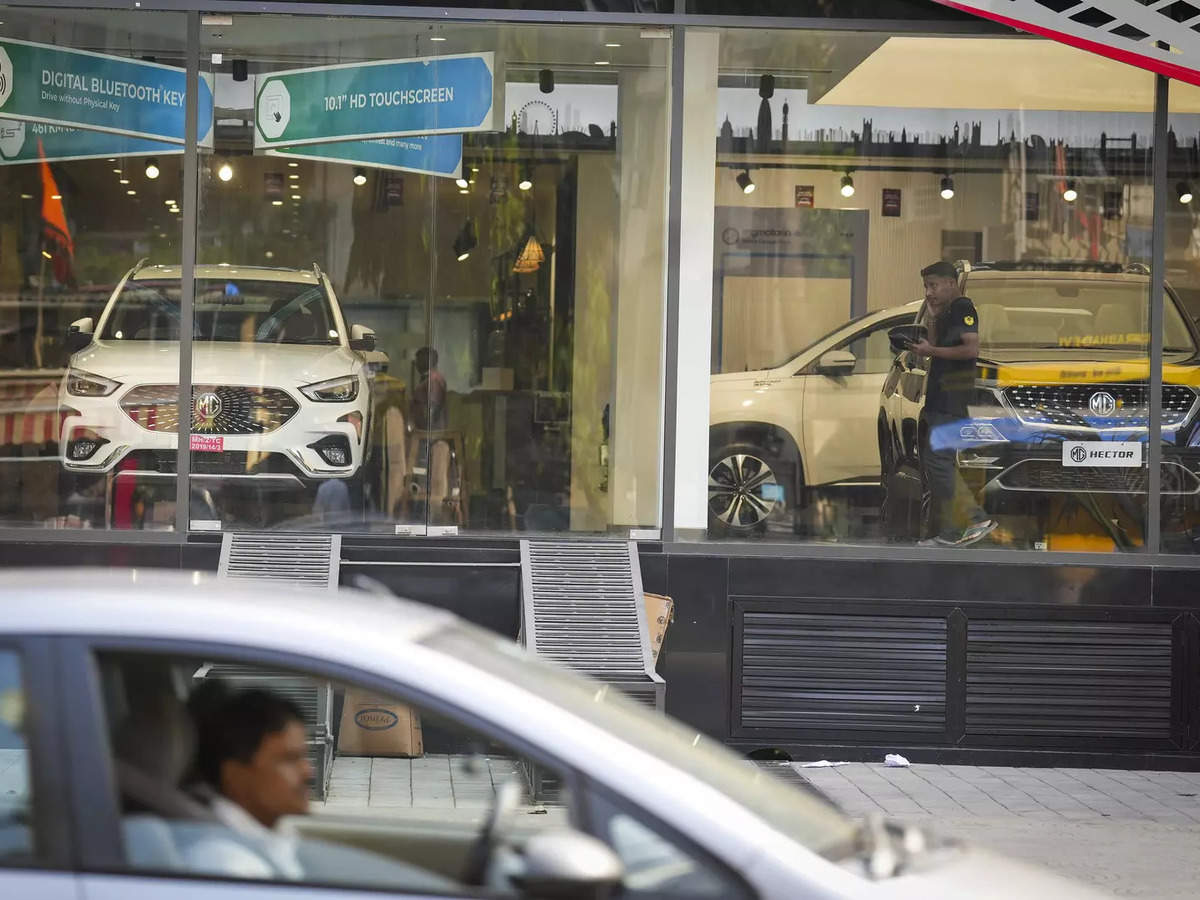Car sales high for 6 months in a row. Will this demand sustain?

Car Sale- The auto industry has approximately 750,000 pending bookings, which is enough for more than two months of dealer-end deliveries. Electric vehicles accounted for nearly 10% of the total November volume.
The passenger vehicle segment, which includes cars, SUVs, and vans, sold over 310,000 units in November, marking the sixth month in a row with sales exceeding 300,000 units. December is expected to be another high-sales month as the industry works to improve deliveries and reduce car wait times mainly.
The PV segment of the auto industry is on track to set a new current record of 3.8 million units in 2022, which would be the best-ever sales in a calendar year, thanks to strong November sales. The previous high, set in 2018, was 3.38 million.
Car Sale: What is driving the auto industry’s numbers?
The resumption of near-normal chip supplies has boosted production, while strong retail demand and new SUV model launches have also contributed to the strong growth. Furthermore, there is a sort of dichotomy, with sales increasing at the middle and upper end of price segments while sales at the entry-level remain sluggish. Furthermore, the industry has an estimated 750,000 pending bookings, which is enough for more than two months of dealer-end deliveries.
Maruti Suzuki has approximately 374,000 bookings, Mahindra & Mahindra has over 200,000, and Tata Motors has approximately 150,000.
Company auto sales
Maruti Suzuki, the country’s largest carmaker, sold 132,395 domestic PVs in November, a 21% increase over the previous month, owing to strong demand for its newly launched SUVs – the new Brezza and Grand Vitara – as well as its CNG range.
Tata Motors, the country’s third largest PV manufacturer, saw its November volumes increase 55% year on year to 46,037 units. Electric vehicles accounted for nearly 10% of the total November volume.

Hyundai Motor India, the country’s second-largest automaker, maintained a slim lead over Tata Motors in November, with 48,003 units sold, a 30% increase over the same month last year.
Mahindra & Mahindra remained fourth in November, with 30,392 units sold, a 55% increase over the same month last year. M&M’s recently launched Scorpio and XUV700 have a full order book.
Demand Seasonal
“Normally, after the holiday season, PV demand drops, but we have a very good order book this year.” “Increases in interest rates have had little effect on demand,” Manish Raj Singhania, who is the president of the current Federation of Automobile Dealers Association, said.
According to Maruti Suzuki, the market will close at 4.1 million units next year, an 8% increase. However, new regulatory changes, as well as general inflationary pressures, may have an impact on demand, acting as potential dampeners.
Will demand remain consistent?
Pending order bookings and new launches are expected to keep demand going for a while, but sales of entry-level vehicles must increase if demand is to last. Maruti Suzuki Ltd expressed concern that the macroeconomic and geopolitical situation does not appear to be improving anytime soon.
“Retail financing is now reflecting the previously announced increase in report rates.” Financing accounts for approximately 80% of total inventory sales in the passenger vehicle segment. “We must closely monitor the demand situation,” said Maruti Suzuki’s director, Shashank Srivastava (marketing and sales). Maruti is notable for being India’s largest player in the entry-level car segment.
The supply-demand imbalance remains.
While vehicle dispatches increased at a healthy rate in November, retail sales were lower than expected due to a slowdown in deliveries following the 42-day holiday season, which concluded in October. PV dealership inventory is expected to increase by 50,000 units to more than 260,000 units due to higher dispatches and lower retails.
There is still a mismatch between available supplies and the models in demand, according to industry participants. According to recent announcements, the industry’s backlog of pending orders is close to a million units, with Maruti Suzuki having more than 400,000, Mahindra & Mahindra having 260,000, and Tata Motors having 100,000. On the one hand, some models, particularly SUVs, have extremely long wait times due to a lack of parts, whereas others are significantly discounted.
The key factors to watch for in the future, according to industry participants, will be the inflation rate, economic growth, interest rates, and liquidity, all of which also may have an impact on demand momentum.
In November, Maruti Suzuki, Hyundai, Tata, Mahindra, Kia, and Toyota sold 2,92,617 units, accounting for 94 percent of total sales, with Maruti Suzuki accounting for 42 percent.
Suzuki – 132,395 units (21%). YoY
Maruti Suzuki also reported wholesales of more than 1,32,395 units in November 2022, a 21% increase over the previous year. In November, sales of its entry-level vehicles, the Alto and S-Presso, increased by 4% to 18,251 units. Last month, Maruti Suzuki’s six-pack, which includes the Baleno, Celerio, DZire, Ignis, Swift, and Wagon R, increased by 28% to 72,844 units (November 2021: 57,019).

UVs (new Brezza, Ertiga, XL6, and Grand Vitara) contributed 32,563 units, up 33% from 24,574 units the previous year. Maruti Suzuki is currently experiencing high demand for its recently introduced Grand Vitara and new Brezza models. Meanwhile, the Ciaz sedan sold more than 1,554 units in November, up 43% from the previous year.
With an estimated order backlog of slightly more than 400,000 units, the company is currently operating at 90 percent manufacturing capacity. It is also strengthening its position in the CNG market, having recently expanded its main CNG portfolio to the premium Nexa channel with the Baleno and XL6. CNG is now available on all 12 Maruti Suzuki models.
Hyundai has 48,003 vehicles, accounting for 30% of the market. YoY
Hyundai’s 48,003 units represent a 30% year-on-year increase (November 2021: 37,001 units). With cumulative sales of 5,13,681 units in the first 11 months of 2022, the company has surpassed the half-million-units sales milestone, and with December figures still being tallied, it is on track for its best-ever annual sales in India.
Last month, the company exported 16,001 units, a 61.5 percent increase from the 9,909 units it sold in November of last year. When exports and domestic sales are combined, Hyundai sold 64,004 units in November 2022, a 36.4 percent increase over the 46,910 units sold in November 2021.
Tata Motors – 46,037 units / 30 percent YoY
Tata Motors sold 46,037 vehicles in November 2022, trailing Hyundai by only 1,966 units. This represents a 55% year-on-year increase and 16,259 more units than the automaker sold in November 2021. In its EV portfolio, Tata Motors has a significant advantage over other automakers. There are currently three models available: the Nexon EV, the Tigor EV, and the fleet-only XPres-T EV. The Tiago EV will be available for purchase in January 2023.

Tata Motors has set a goal of producing and selling over 500,000 passenger vehicles in FY2023, including 50,000 electric vehicles, and it is on track to meet that goal. Tata Motors fell 1,36,296 units short of its target, selling 3,63,704 vehicles between April and November, with four months remaining in the current fiscal. Total sales are expected to be 3,34,765 IC engine cars and 28,939 EVs.
Mahindra & Mahindra – 30,392 units / 56% year on year
Mahindra sold 30,238 SUVs in November 2022, a 56% increase from the previous year (November 2021: 19,384). In addition, the company sold 154 e-Veritos, bringing the November total to 30,392 units, a 56% increase year on year.
Cumulative SUV sales for the April-November 2022 period are 2,29,516 units, a 75 percent increase over the previous year’s sales of 1,31,434 units. Mahindra has surpassed FY2022 SUV sales of 2,23,682 units with four months remaining in the fiscal year.
The company had an order bank of 2,60,000 units as of November 1st, primarily made up of five models: the recently launched Scorpio N and Scorpio Classic (1,30,000 units), the XUV700 (80,000 units), the Thar (20,000 units), the Bolero and Bolero Neo (13,000 units), and the XUV300 (13,000 units). Given this scenario, Mahindra has announced an aggressive manufacturing capacity expansion programme with the goal of increasing production by 68 percent to over 6,00,000 units per year over the next 12-15 months.
Kia – 24,025 vehicles / 69.1% YoY
Kia India sold 24,025 vehicles, a 69 percent increase over November 2021 sales of 14,214 vehicles. With 9,284 units sold, the Seltos, the company’s mainstay, led the way, followed by the Sonet compact SUV (7,834) and the Carens (6,360) and Carnival (419) MPVs. In addition, the company delivered 128 premium EV6 units, bringing the total number of EV6 deliveries to 296.
Toyota – 11,765 units sold / – 10% YoY
Toyota Kirloskar Motor reported November 2022 wholesales of 11,765 units, a 10% decrease from November 2021 wholesales of 13,003 units.

Toyota sold 1,16,262 vehicles in the first eight months of the new fiscal year, a 46 percent increase over the previous year (April-November 2021: 79,725 units). Toyota sold 1,49,422 units in the first of 11 months of the current fiscal year 2022, a 25% increase from the previous year (January-November 2021: 1,19,917 units).
Honda – 7,051 / 29.1% year on year
Honda Cars India increased by 29% year on year in November 2022. The company sold 7,051 units in the domestic market, up from 5,457 units in the same period last year. In October 2022, however, Honda’s sales fell by 26% month over month, with the company selling 9,534 units.
Meanwhile, exports fell nearly 50% to 726 units, down from 1,447 the previous year. Exports were also down significantly month on month, from 1,678 units in October 2022 to 1,678 units in October 2023.
Skoda – 4,433 vehicles / 64% year on year
Skoda reported sterling growth last month. At 4,433 units, November 2022 numbers are up 102 percent from last November’s 2,196 units. This strong performance has resulted in a 137 percent increase in Skoda’s sales year to date, primarily driven by the Kushaq and Slavia. Skoda sold 48,933 vehicles in the first 11 months of 2022 (January-November 2021: 20,624), exceeding total calendar year 2021 sales of 23,858 vehicles.
Given its current sales momentum, the company should easily exceed its fiscal year 2022 sales target of 50,000 units. India is now Skoda’s third-largest market in the world, and the company is launching new initiatives to accelerate its growth. These include a 26% increase in its retail network, from 175 stores in December 2021 to over 220 currently.
4 079 units / 64.4% MG Motor YoY
In November 2022, MG Motor reported retail sales of 4,079 units, a 64.4 percent increase over November 2021, when it sold 2,481 units. Meanwhile, compared to October 2022, monthly sales fell by 288 units, or 6.6%. MG had sold 4,367 units by October 2022.
Nissan – 2,400 units (a 9% decrease). In November 2022, Nissan reported domestic market wholesales of 2,400 units, a 9.46 percent decrease from the previous year (November 2021: 2,651 units). From April to November 2022, the total number of units sold was 23,344 units, a 6.45 percent decrease year on year (April-November 2021: 24,955 units).
The Nissan Magnite, the company’s sole model on the market, has sold 63,356 units since its debut in December 2020 through the end of October 2022. It sold 9,569 units in fiscal year 2021, 33,905 units in fiscal year 2022, and 19,882 units in fiscal year 2023’s first eight months.
Edited by Prakriti Arora




